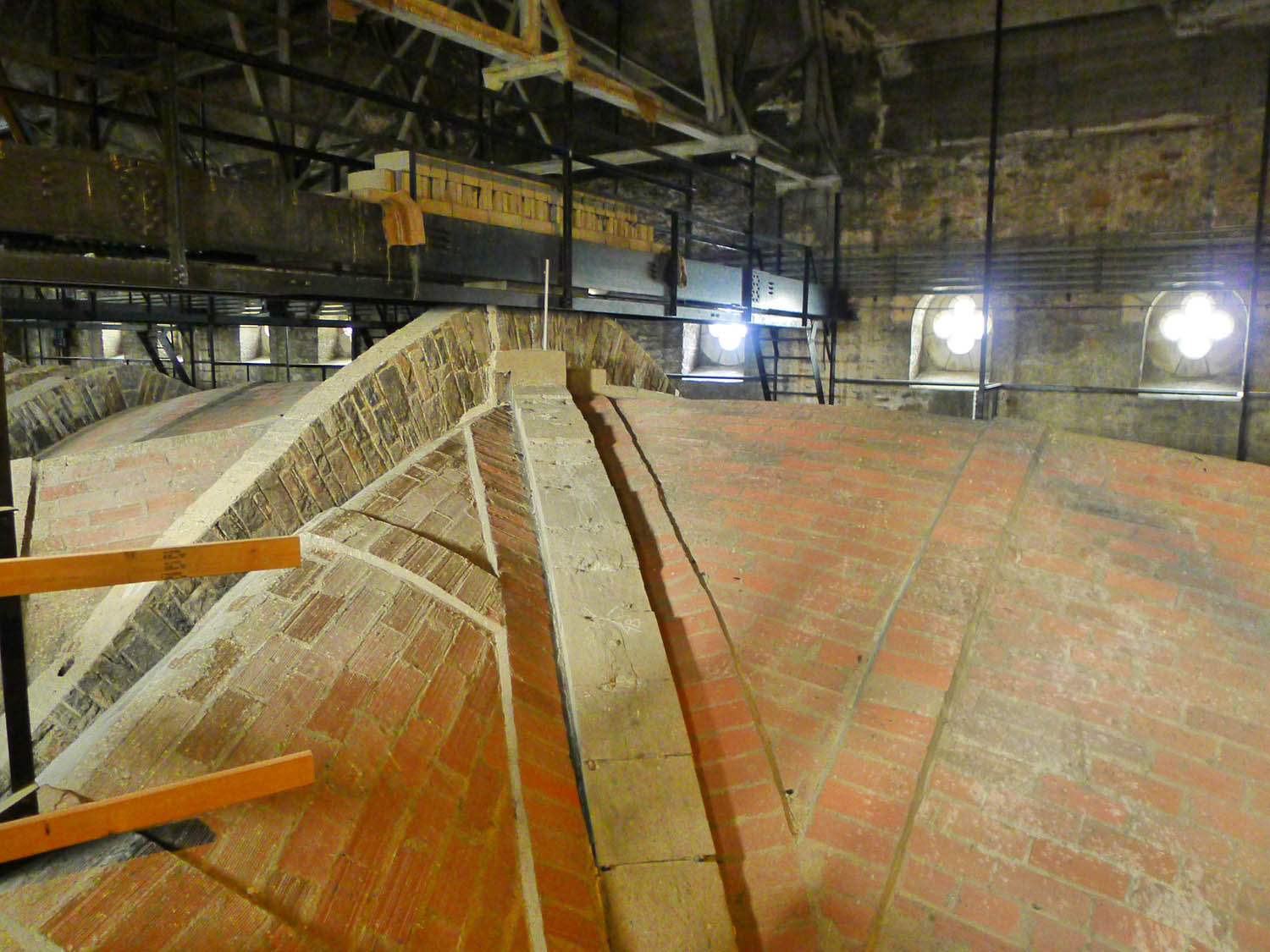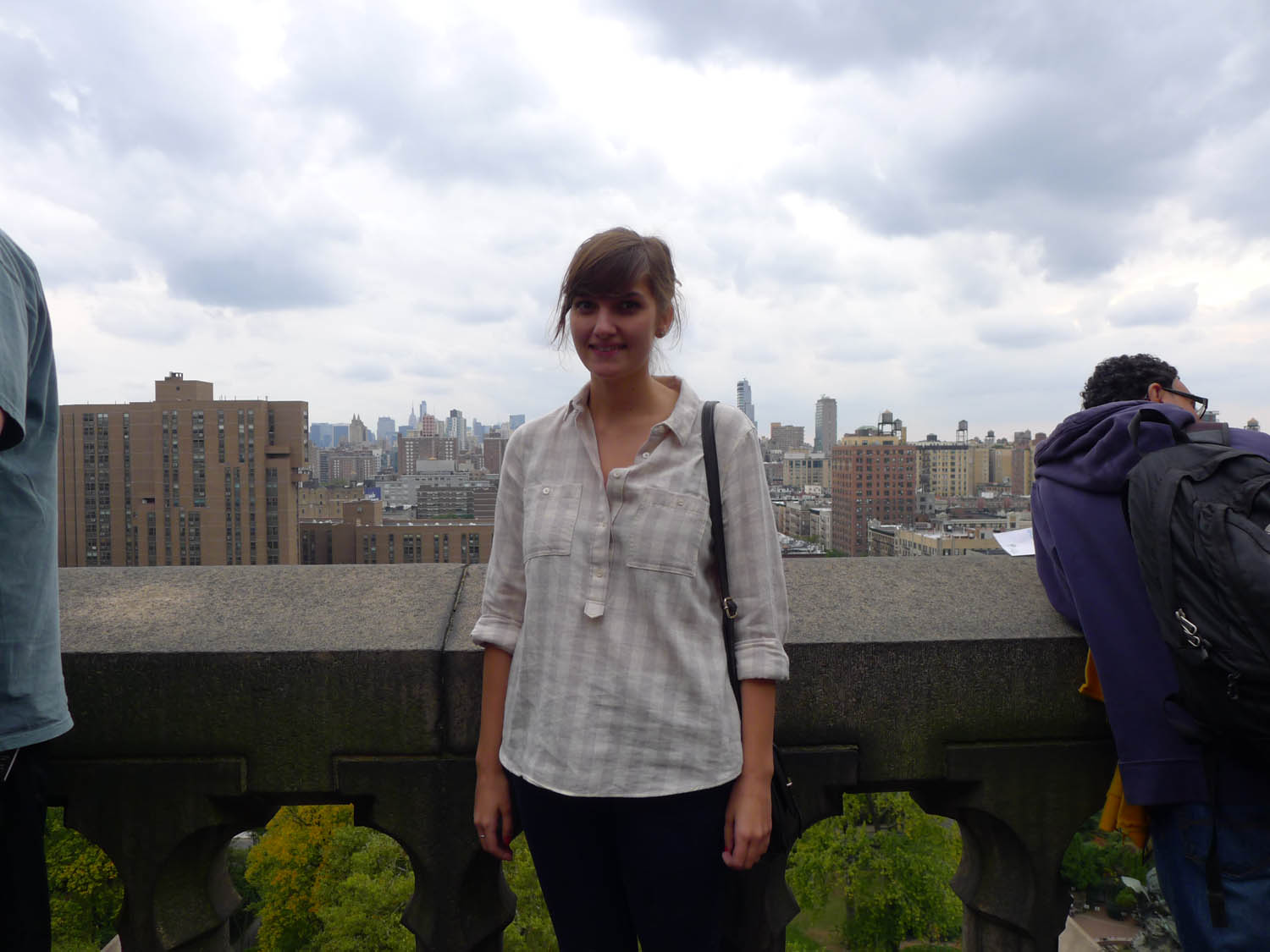
When I entered the Cathedral Church of St John the Divine on West 112th Street this afternoon, I immediately welled up. The inside of this grand building, which claims to be the world’s largest cathedral, is breathtakingly beautiful. As soon as I walked through its two-tonne doors, I knew it was going to be one of my favourite things of the year.
But there was an added bonus: I wasn’t just going to wander aimlessly – I had booked into the Vertical Tour, which takes visitors up narrow, winding staircases to the balconies, the ceiling and eventually the roof.
Our guide Gene led us to the large open floor of the cathedral to give us a bit of background, explaining that construction started in 1892 in the Romanesque style, before the architect was booted out in 1909 in favour of one who’d build it in a gothic style, Ralph Adams Cram. I learned that one of the main features of gothic architecture is that it allows light to stream in, meaning that the walls are thinner so windows can be added easily. But with thinner walls and a great, great height, it means that the weight has to be supported somehow – which is why there are huge columns inside and buttresses outside.



Another thing Gene pointed out here was the stained-glass windows. I love a good stained-glass window and these were far more vivid than any I’ve seen in Europe. In fact, for someone who grew up with a 1,000-year-old church in my village, it was very interesting to see a cathedral built within the past 150 years. The stained-glass windows all paid tribute to human feats – with a set of windows for the arts, medicine, law and so on. What was astonishing to me was how the ‘communication’ window featured a TV in its final panel. A TV! And yet the window, which was obviously created in the 1940s, had been crafted so beautifully and fitted perfectly in this massive building that you could easily mistake for being centuries old.

Doesn’t it remind you of that lovely circular stained-glass window I saw in the synagogue this week?
The construction actually stopped in the 1940s when the U.S. entered World War II and hasn’t picked up since. While there are no gaping holes in the walls, there are a few missing statues. Gene added that the building was supposed to be a cross shape but didn’t quite get there, so it’s been left looking a little lopsided.
After the brief background, we moved on from the stained-glass windows on the ground floor and took a narrow staircase to the first level to look down at the cathedral floor.


Then we went up one more. On this level the stained-glass windows showed saints and disciples.




On the final floor, we were in the ‘heavens’ with pictures of Jesus. At this point, some of the more nervous group members decided to stay in the hallways. I’m fine with heights but man, this was high. I could barely muster the courage to put my camera over the edge for pictures.

But there was more! We went up another level to see above the cathedral ceiling. This was by far my favourite, as it was totally unexpected. It was sort of an in-between level – in-between the ceiling of the cathedral and the building’s roof. The roof had been built to protect the inside of the cathedral from the elements, leaving us with this snug space between. From here, you could see the points of the gothic ceilings.



There was yet one more level and finally, we were at the top. From a patch of roof, we overlooked the Children’s Sculpture Park beneath us and far south to the city skyline. Can you see the Empire State Building?






The hour-long tour finished with us descending down the dizzying staircases and back to the ground floor – where I proceeded to check out the many vaults, prayer rooms and hidden nooks of the cathedral. All of which were absolutely stunning.




 This was such a fantastic use of a Saturday – I cannot recommend the trip enough. And if you’re going all that way, I really encourage you to sign up to the Vertical Tour (it’s $15 for adults, $12 for seniors and students). It was amazing to see so much – and when we finally returned to the ground, I felt sorry for the other tourists who weren’t in on the same secrets.
This was such a fantastic use of a Saturday – I cannot recommend the trip enough. And if you’re going all that way, I really encourage you to sign up to the Vertical Tour (it’s $15 for adults, $12 for seniors and students). It was amazing to see so much – and when we finally returned to the ground, I felt sorry for the other tourists who weren’t in on the same secrets.














Recent Comments